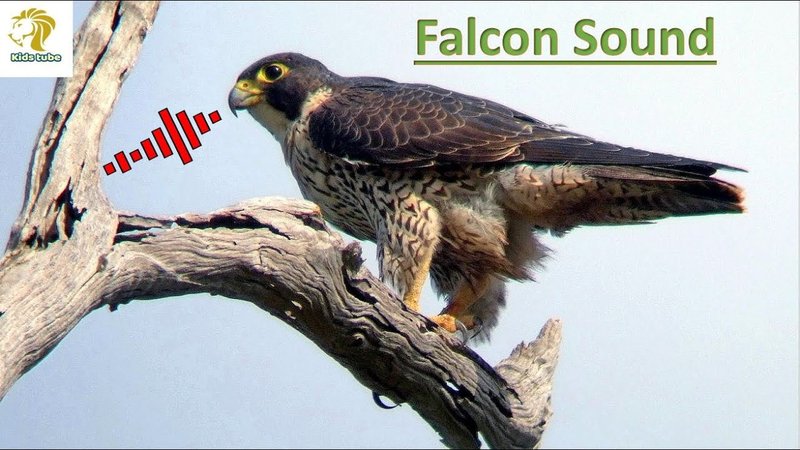
Falcons are fascinating creatures, and their vocalizations tell us much about their behavior and social interactions. From the sharp shriek of a Peregrine Falcon to the soft cooing of a Merlin, each sound has a purpose and a meaning. So, whether you’re a birdwatcher hoping to understand more about these incredible raptors or just curious about how they communicate, this guide will help you dive into the world of falcon sounds.
The Basics of Falcon Vocalizations
Falcons communicate primarily through vocalizations, which can be classified into different categories depending on their purpose. These sounds can be loud and piercing or soft and subtle. Commonly, their vocalizations serve to establish territory, attract mates, or signal danger. Understanding these sounds is crucial for anyone interested in falcon behavior.
Different species will have their unique calls. For example, the Peregrine Falcon is known for its iconic ‘kick’ call, which is often heard during courtship or when announcing its presence. Other species, like the American Kestrel, have a variety of chirps and whistles that serve various functions. This diversity in sounds not only helps define the species but also plays an essential role in their survival.
You might be wondering why these vocalizations are so important. Well, they help falcons maintain social structures and signal different situations. Imagine being at a family gathering where everyone has their way of communicating. That’s how falcons operate within their communities. Getting to know their calls can create a deeper appreciation for these birds and their intricate lives.
Types of Vocalizations
Broadly, falcon vocalizations fall into three main categories: alarm calls, mating calls, and territorial calls. Let’s break these down a bit further.
1. Alarm Calls: Alarm calls are sharp and loud sounds made when a falcon perceives a threat. These calls serve to alert other falcons in the vicinity, warning them of possible danger. For instance, if a predator like a hawk appears, a falcon might emit a high-pitched screech to signal its friends and family. This behavior enhances survival rates, as it enables the group to react quickly.
2. Mating Calls: During the breeding season, falcons engage in elaborate vocalizations to attract mates. Male falcons often perform a series of soft whistles to court females. The intensity and frequency of these calls can indicate a male’s fitness and desirability. It’s like a romantic serenade, where the best singer gets the girl!
3. Territorial Calls: To establish dominance over a specific area, falcons use territorial calls. These calls are usually aggressive and loud, aimed at deterring other birds from entering their hunting grounds. It’s their way of saying, “This is my turf, back off!” When you hear a falcon screaming in the distance, it’s often a sign that it’s protecting its territory.
Decoding the Sounds
So, what exactly do these sounds mean? Learning to decode falcon vocalizations can be a fun and rewarding experience. Each call has a distinctive tone, pitch, and rhythm that provides clues to its meaning.
For example, high-pitched screams often indicate distress or alarm. If a falcon is cornered or threatened, you’ll hear a series of rapid, sharp hawking sounds. This signals other falcons to come to assist or flee the area.
On the other hand, a softer cooing sound is often heard during courtship. Male falcons will usually perform this when trying to woo a mate. The softer the call, the more intimate the intent—think of it as a gentle whisper rather than a public declaration.
Lastly, rapid, repetitive notes can indicate excitement or aggression, especially when a falcon is chasing prey or defending its territory. Listening carefully to these variations in sound can provide deeper insights into the falcon’s emotional state and intentions.
Regional Variations
Just like humans have different accents or dialects, falcons also express regional variations in their vocalizations. Different populations may have unique calls influenced by their environment or social structures. For instance, a Peregrine Falcon living in an urban area may have a slightly different vocalization than one in a rural setting due to the background noise.
Studies have shown that falcons in different regions may adapt their calls to communicate effectively in their specific environments. This can include alterations in pitch, rhythm, and even the frequency of calls. Imagine living in a bustling city and needing to shout over traffic versus someone in a quiet countryside; your communication style would adapt, too.
Understanding these regional differences can enhance birdwatching experiences. By recognizing calls specific to your area, you’ll connect more deeply with the local wildlife, making your excursions more enjoyable and enriching.
Why Vocalizations Matter
The importance of falcon vocalizations stretches far beyond mere communication. These sounds play a pivotal role in their survival, mating, and social organization. By recognizing and understanding their calls, we can gain insight into their behavior and ecological needs.
Falcon vocalizations are also vital for researchers studying bird populations. Monitoring these calls can help scientists gauge the health of falcon populations and detect changes in the ecosystem. For instance, a decline in alarm calls may indicate a rise in predation or habitat loss, prompting necessary conservation actions.
Furthermore, as human interaction with natural habitats increases, understanding these vocalizations becomes even more critical. By respecting their communication and habitats, we can contribute to the overall health of falcon populations. It’s a shared responsibility where both humans and wildlife can thrive.
Learning from Falcon Vocalizations
If you’re interested in falcons, taking the time to learn their vocalizations can be an enriching experience. Whether you’re studying or simply enjoying birdwatching, understanding these sounds enhances your connection to the natural world.
A great way to start is by visiting local nature reserves or parks where falcons are known to nest. Bring along a trusty field guide or even use mobile apps that can help identify bird calls. Listening carefully and taking notes can transform your falcon-watching experience. You’ll start recognizing distinct sounds and connecting them to specific behaviors.
You might even consider joining a birdwatching group or attending workshops focused on raptor identification. Engaging with other enthusiasts can deepen your understanding and appreciation of these incredible birds.
Falcon vocalizations are a mesmerizing window into the lives of these remarkable birds. From alarm calls that signal danger to soft coos during courtship, each sound tells a story packed with meaning. By taking the time to understand these vocalizations, not only do we appreciate the complexity of their communication, but we also foster a deeper respect for wildlife.
So, next time you hear the sharp cry of a falcon, take a moment to listen closely. You might just unlock a whole new layer of understanding about these stunning creatures and their intricate world. Whether you’re out birdwatching or simply enjoying nature, these sounds enrich our connection to the wild. Happy listening!

